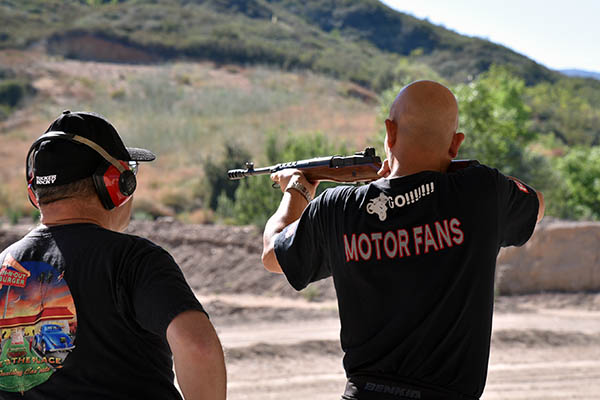
If you do, sign up for our free email updates. You can do so with the widget to the right (if you’re on a computer) or at the bottom (if you’re reading this blog on a mobile phone). At the end of March, we’ll pick a name from the folks on our email list and that lucky person will get a free copy of one of our moto adventure books. In the meantime, here’s one of my favorite chapters from 5000 Miles At 8000 RPM, one of our best selling books. The background is this: We had a bunch of folks coming over from China and Colombia (huh, Colombia?) to ride with us from LA to Sturgis to Washington and Oregon and back to LA along the Pacific coast, stopping at every National Park and hitting the best roads along the way. It was a hell of a ride. But the events of a trip to the rifle range and a nearby Bass Pro store were equally as interesting.
Take a look…here’s Chapter 12 of 5000 Miles At 8000 RPM…
The Chinese and the Colombians all arrived around the same time, and they all came in through Los Angeles International Airport. Steve and I met our six Chinese guests as they arrived. I’ll take a minute here to introduce everyone.
Hugo was the first to arrive. Hugo is a Zongshen employee, and he is the Zongshen representative and sales manager assigned to Colombia. Colombia is Zongshen’s largest export customer, and Zongshen keeps a full time representative in that country. Hugo came to us as a result of the US government denying entry visas to the original Zongshen people who planned to accompany us on the Western America Adventure Ride. I liked Hugo the instant I met him. He’s a good guy.
I should also tell you at this point that our Chinese guests’ names may be a little confusing. The Chinese use their family name first, and their given name second. Hugo’s real name is Ying Liu, so Ying is his family name and Liu is his given name. I read that and I called Hugo “Ying Lew.” He laughed at my pronunciation and told me how to say it correctly. I tried a couple of times and then dropped any pretense of being culturally sensitive. Hugo it would be.
A lot of the Chinese adopt an English name to make it easier for big dumb Americans like me to communicate with them. It’s a nice move on their part. I’m telling you all of this so you’ll realize that some of the guys have Anglicized names, and some have Chinese names. You’ll get the hang of it as the book progresses.
The next flight brought Lester, Tony, Tso, Kong, and Kyle to us.
Lester is a tall man who looks just like Yul Brynner in The King and I. He’s a physical fitness instructor in a primary school in China, and he also owns a very successful motorcycle and bicycle luggage manufacturing company in China. Lester spoke English well. He is a prominent blogger in China on their premier motorcycle forum. Lester blogged about our trip extensively while we were on the road.
Tony is a celebrity photographer. He owns several motorcycles and his photos are widely published in China and other parts of Asia. He’s an interesting man. You’ll see him holding a small stuffed dog in my photos. That’s MoMo, a mascot who has accompanied Tony to more than 20 countries.
Tso would emerge as the quiet one in our group. He stuck with his Chinese name (it’s pronounced “szo” with a hard “sz” sound). Tso is another industrialist; he owns a motorcycle clothing company in China. He was wearing his company’s motorcycle gear, as were several of the other Chinese riders.
When I met Kong, I immediately told him that from this point forward on our ride, he would be “King Kong.” The Chinese got a big laugh out of that. They all knew the movie and they all liked Kong’s new name. Kong is a prominent automotive journalist in China.
Kyle had an English name, but he didn’t speak much English. He is an advertising designer and executive, and his customers include the big oil companies in China. Kyle was a lot of fun, and he sure could work wonders with a video camera.
I asked Hugo how Zongshen selected these guys for the Western America Adventure Ride. I didn’t understand everything he told me, but I think it was based on their motorcycling experience and a contest of some sort Zongshen had held in China. Each of these guys has a huge media following in China. They were all what I would call high rollers. These folks owned their own companies and were well-known writers and bloggers in China.
The two Colombians also met us at the airport that night. Their participation in the ride was a last minute arrangement. I received a Skype message from Hugo about a week before the ride asking me if the Colombians could accompany us. It was a surprise to me, but I didn’t have a problem with it. I thought they would be AKT employees, but they weren’t.
Juan Carlos, one of the two Colombians, owns the only motorcycle magazine in Colombia. He’s a tall thin guy and an excellent rider. He once rode a KLR 650 to Tierra del Fuego, the southernmost tip of South America, and he had written a hell of a story about it.
Gabriel Abad was the other Colombian. He was instrumental in helping Juan Carlos start his motorcycle magazine. Although Gabriel is a Colombian, he lives in Canada. That certainly was in keeping with the international flavor of our team.
When our good buddies from China and Colombia arrived in the USA that evening, one of their first requests was for an In-N-Out Burger. We did that on the way home from LAX. Then it was on to the hotel in Duarte (the next town over from Azusa) and a good night’s sleep after their long journeys to America.
We had a spare 2 days before the ride. We rode around locally to get everybody used to their bikes on the first day, and on the morning of the second day I asked our guests what they would like to do.
Their answer was direct: We want to shoot a gun.
I was happy to oblige. I’m a firearms enthusiast and I’ve been a member of our local gun club for decades. I put my Ruger Mini 14 in the van and we were off to the West End Gun Club.
Our guests were fascinated with everything America has to offer, and the freedom guaranteed by our 2nd Amendment was obviously high on that list. After a brief lesson at the gun club on the rifle, the .223 cartridge, and firearms safety, we set up a target and took turns putting the Ruger through its paces. The guys loved it. The smiles were real, and I had brought along plenty of ammo. The Chinese and the Colombians did well. Literally every shot was on target. They told me I was a good teacher. I think they are just good shots.
Now before any of you get your shorts in a knot about guns and shooting, let me tell you that even though I am a strong 2nd Amendment supporter, I can understand why some of you might be opposed to the freedoms guaranteed by the US Constitution. When I go to a public range I sometimes see people who I wouldn’t allow to have oxygen (let alone firearms).
The problem, as I see it, is that if you restrict our rights in this area, it would be a government pinhead making the call on who gets to have guns and who doesn’t (and that scares me even more than some of the yahoos I see with guns). It’s a tough call, but I’ll come down on the side of the 2nd Amendment every time. The founding fathers knew what they were doing, and they did it before the pinheads permeated the government.
Ah, but I digress yet again. Back to the main attraction…my day at the range with our guests.
I didn’t get photos of that event. I was busy teaching, watching, and explaining, and I just didn’t have an opportunity. The Chinese and the Colombians did. They were having a blast (literally and figuratively), and they captured hundreds of photos. I didn’t realize just how special this would be to them when we first left Azusa for the gun club, but it became apparent as soon as we arrived at the range. They all ran up to the line and were fascinated by the spent brass lying on the ground. Several of our guests took pictures. Imagine that…taking pictures of empty shell casings!
When I took the rifle out of its case and opened the ammo box, there were even more oohs and aahhhs. And more photos. I guess I’m so used to being around this stuff I didn’t realize how special this day was for our guests. These guys had never held or fired a gun before. Ever. I was amazed by that. They were amazed that we have the freedom to own and shoot firearms. It was an interesting afternoon.
When we finished, all of our guests collected their targets. I had brought along enough targets to give each person their own. We had the range to ourselves that afternoon, so each of the guys would shoot a magazine full of 5.56 ammo, we made the rifle safe, we went downrange to see how each person did, and then we put up a new target for the next guy. Many of the guys repeated that cycle three or four times. It was fun. The guys were like kids in a candy store. I enjoyed being a part of it.
It was hot when we finished shooting at around 4:00 p.m. that day. We were due to meet for dinner at Pinnacle Peaks (a great barbeque place in San Dimas) at 6:00 p.m., and we had a couple of hours to kill. I asked our guests if there was anything else they wanted to do before we went for dinner. My thought was that they might want to go back to the hotel and freshen up. That’s not what they had on their minds. They had another request: Can we go to a gun store?
That sounded like a good idea to me. We have a Bass Pro near where we were, and it’s awesome. Okay, then. Our next stop would be Bass Pro.
I was already getting a sense of how much our guests liked taking pictures, so I told them when we entered the gun department at Bass Pro we should put the cameras away. Usually there are signs prohibiting photography in these kinds of places. We gun enthusiasts don’t like being photographed by people we don’t know when we are handling firearms (big brother, black helicopters, and all the rest of the unease that comes with a healthy case of paranoia and a deep distrust of the government). I told our guests I would ask if we could take photos, but until then, I asked them to please keep their cameras in their cases.
The guys were in awe when we entered Bass Pro, and then they were even more astounded when we reached the gun department. They were literally speechless. Open mouths. Wide eyes. Unabashed amazement. There isn’t anything like Bass Pro in China or Colombia. I’ve been to both countries and I know that to be the case. Hell, there wasn’t anything like Bass Pro in America until a few years ago. It’s a combination of a museum, a theme park, a gun store, an armory, and a shopping emporium. I love the place and all that it says about America.
Now, you have to picture this. The Bass Pro gun department. Hundreds of rifles and handguns on display. Targets. Ammo. Gun cases. Reloading gear. A bunch of guys from China talking excitedly a hundred miles an hour in Chinese. The rest of the customers watching, literally with dropped jaws, wondering what was going on. We were a sight.
The Colombians were talking excitedly the same way, but in Spanish.
I was the only guy who looked like he might be from America (my YouTubby belly probably gave me away). The gun department manager looked at me with a quizzical eye. I explained to him who we were and why these guys were so excited. He smiled. “Would they like to take pictures?” he asked. Hoo boy!
The guys loved it. So did the Bass Pro staff. They were handing the Chinese these monster Smith and Wesson .500 Magnums so they could pose for photos, ala Dirty Harry. It was quite a moment and it made quite an impression. One of the guys had his video camera out and he was recording one of the Chinese riders holding a huge Smith and Wesson revolver. The guy with the revolver did a pretty good impersonation of Clint Eastwood (albeit with a Chinese accent):
Do you feel lucky, punk? Well, do ya?
It was pretty funny. That Dirty Harry movie is 40 years old and it was made before most of our guests were born, but these guys knew that line. The Chinese would surprise me a number of times with their mastery of many American things from our movies and our music. All that’s coming up later in this story, folks.
The Chinese and the Colombians were absolutely fascinated with the whole guns and shooting thing and what it is like to live in America, and the Bass Pro staff were quite taken with them. I was pleased. Our guests were getting a first-hand look at American freedoms and American hospitality. It was a theme we would continue to see emerge throughout the Western America Adventure Ride.
For me, a crowning moment occurred on the way to dinner that night. One of the Chinese told me that all the time he was growing up he had been told that Americans were evil and we were their enemy. “That’s just not true,” he said.
Mission accomplished, I thought.

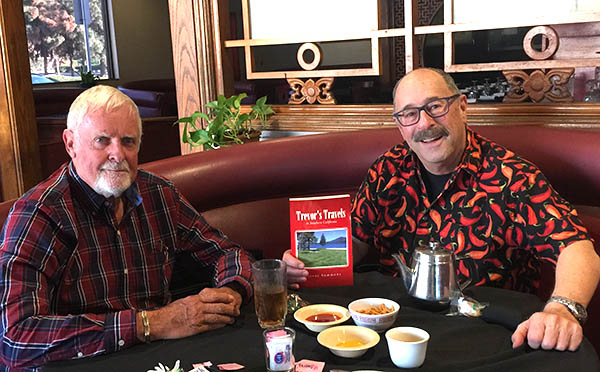
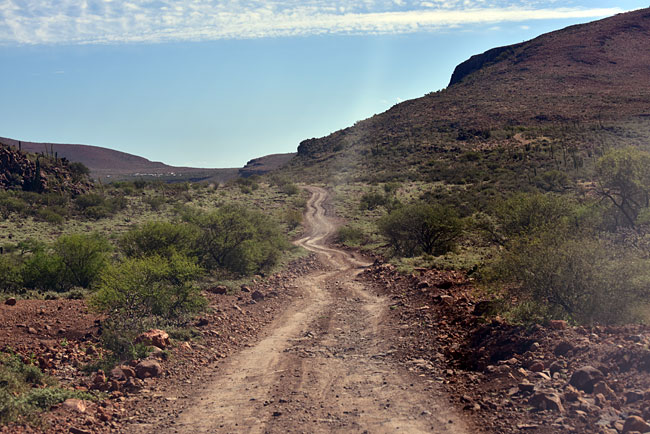
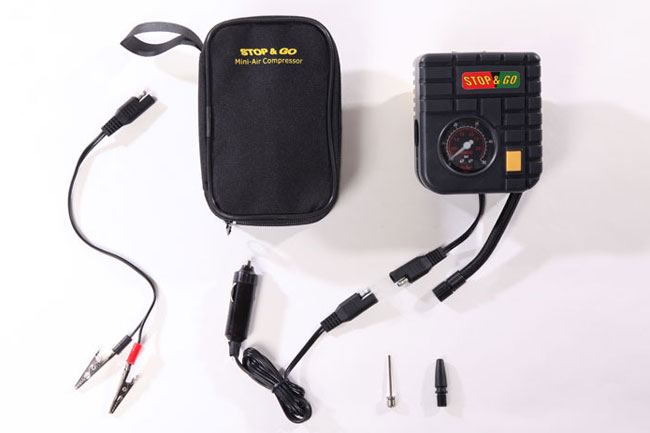
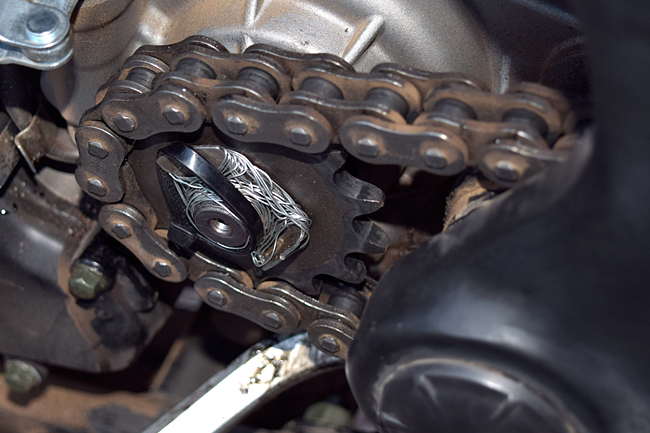
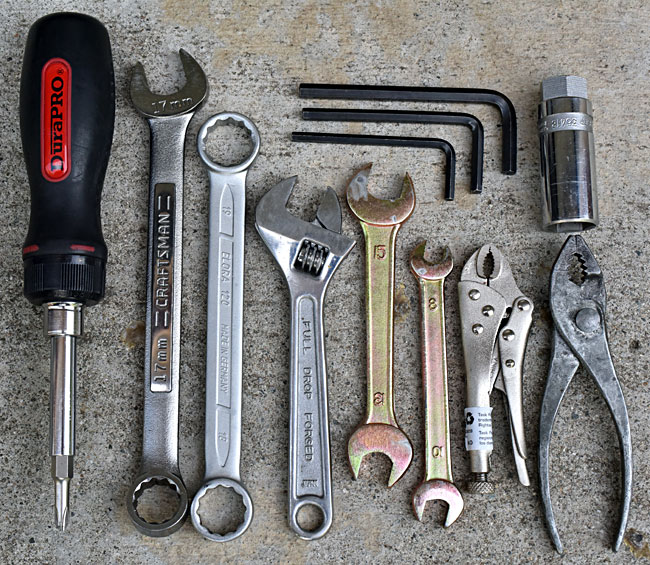
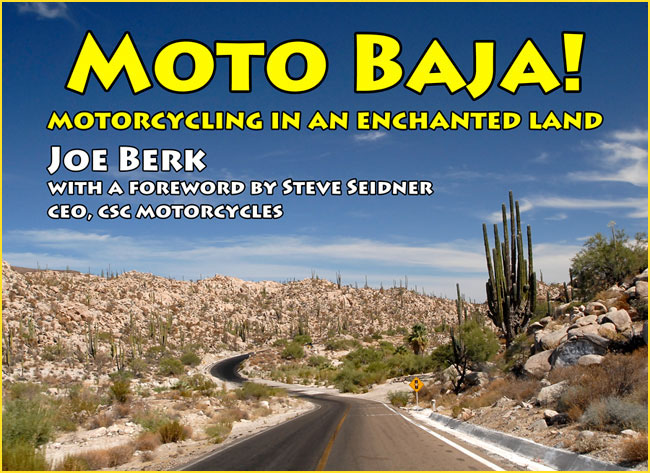
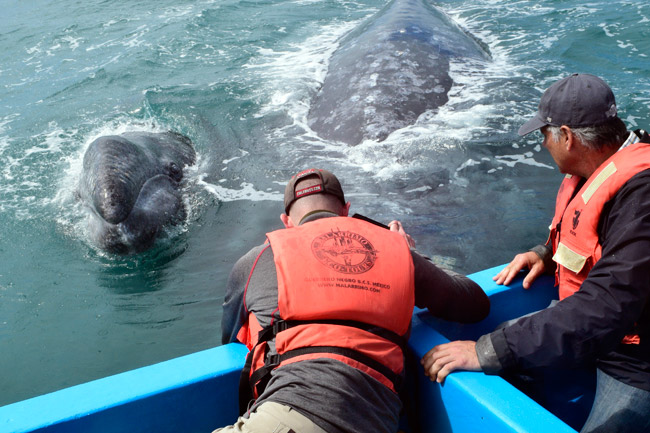
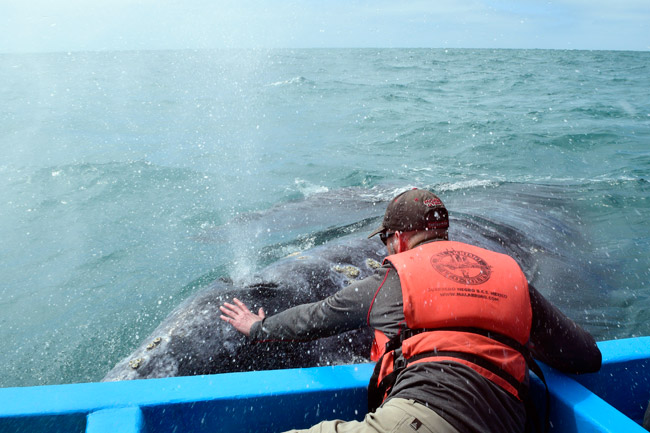
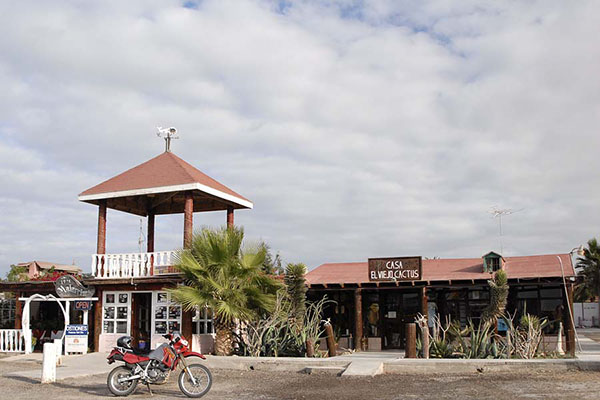


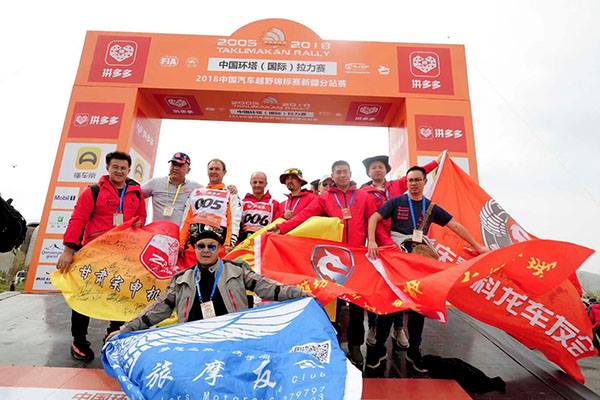
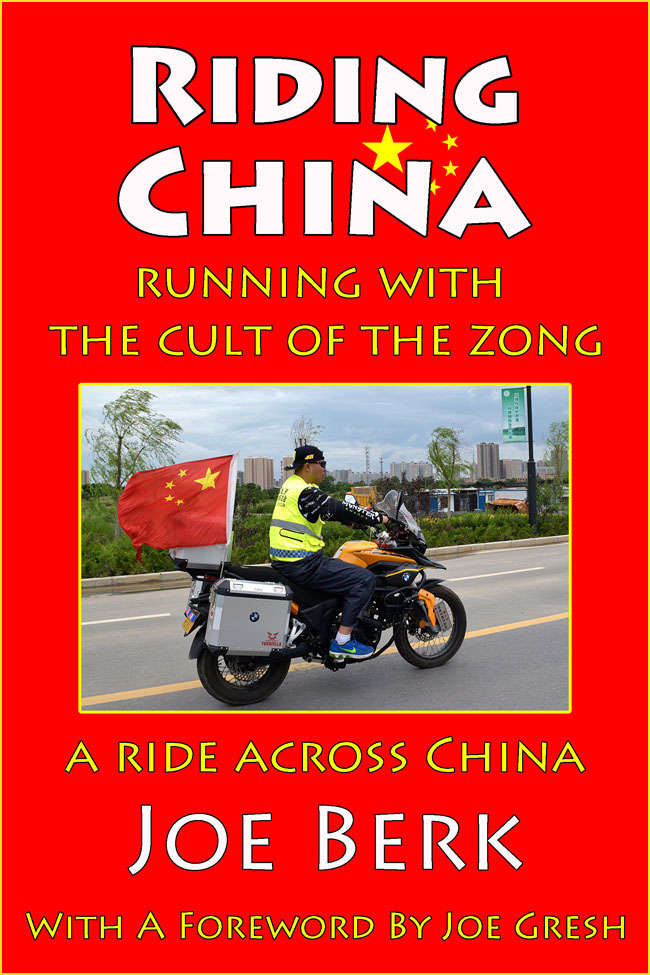
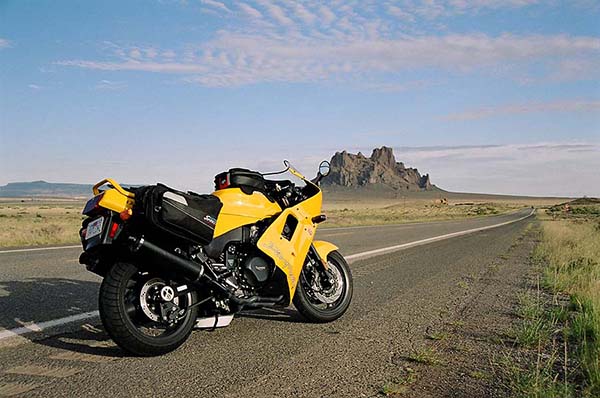


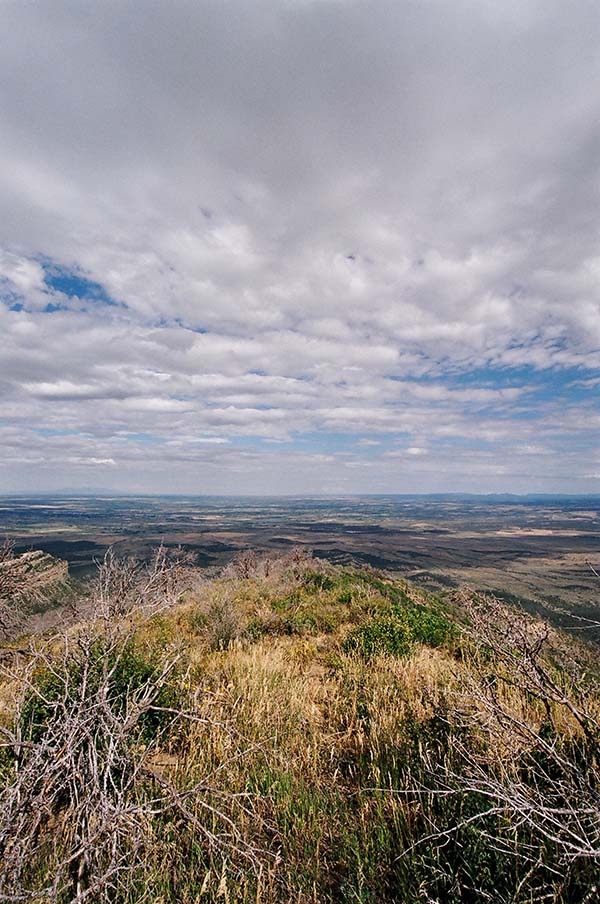

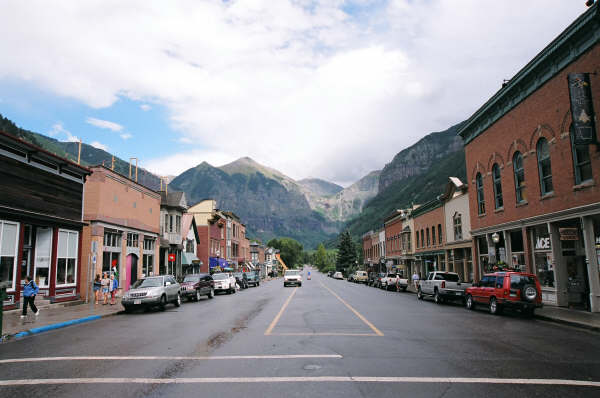
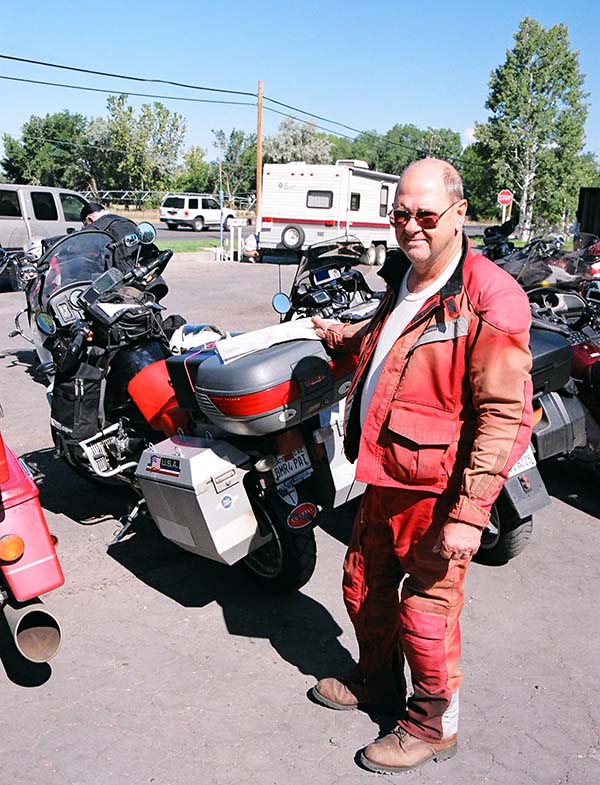
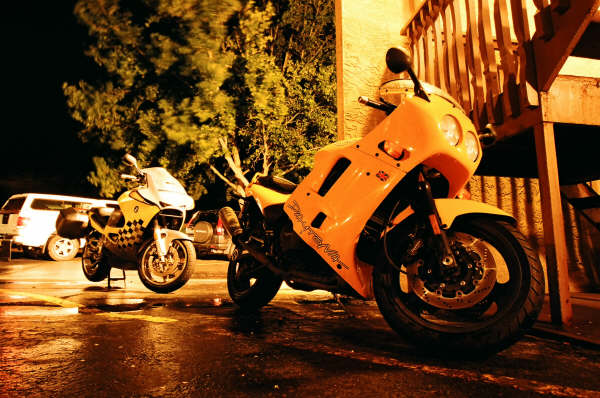

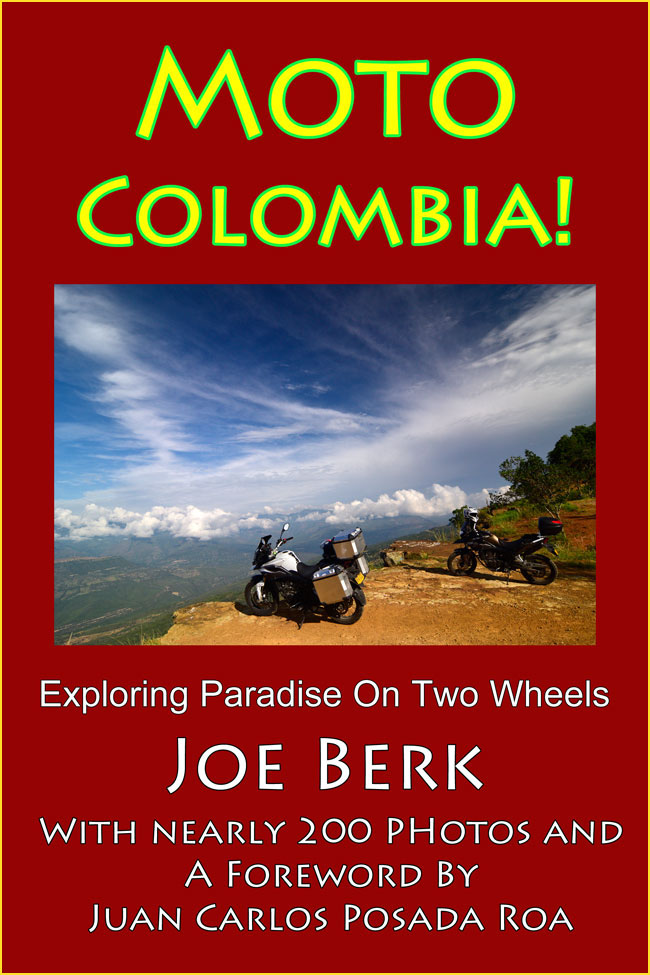

 The fog nestled so close to the ground made it appear as though I was looking at a forest of cacti poking their heads through the clouds. For some unknown reason, I took that as an omen of good things to come. I passed one truck on that 40 mile stretch to the main highway.
The fog nestled so close to the ground made it appear as though I was looking at a forest of cacti poking their heads through the clouds. For some unknown reason, I took that as an omen of good things to come. I passed one truck on that 40 mile stretch to the main highway. I wasn’t yet familiar with my CSC TT250, but I had read reviews of 65 mpg, and since I didn’t yet know what 3/4 full meant on my bike, I decided to press on, optimistic that I would find gas somewhere on the way.
I wasn’t yet familiar with my CSC TT250, but I had read reviews of 65 mpg, and since I didn’t yet know what 3/4 full meant on my bike, I decided to press on, optimistic that I would find gas somewhere on the way. As I continued north, I noticed my gas gauge reaching 1/2 full at Chapala. I still had 63 miles to go to Catavina, which was the only place that I thought may have gas. Hoping that the gauge accuracy was a bit on the conservative side, I continued on. Running the numbers in my head, I concluded that I should make it to Catavina, even if my actual fuel level was a little less than indicated. However, if Catavina didn’t have gas, then I was going to either have to stay there until I could find someone passing through with extra gas, or try to locate a rancho that might have a couple of gallons to spare. Fortunately, in Catavina I came across a small sign stuck in the dirt on the left side of the highway that said Pemex. The arrow pointed to the right side of the road, and as my eyes scanned the opposite side of the highway, I saw a pickup truck with a couple of 55 gal drums and a few one gallon plastic containers. By this time I had travelled about half the distance to San Quintin, and although my low fuel light was already flashing, I still had not gone on reserve
As I continued north, I noticed my gas gauge reaching 1/2 full at Chapala. I still had 63 miles to go to Catavina, which was the only place that I thought may have gas. Hoping that the gauge accuracy was a bit on the conservative side, I continued on. Running the numbers in my head, I concluded that I should make it to Catavina, even if my actual fuel level was a little less than indicated. However, if Catavina didn’t have gas, then I was going to either have to stay there until I could find someone passing through with extra gas, or try to locate a rancho that might have a couple of gallons to spare. Fortunately, in Catavina I came across a small sign stuck in the dirt on the left side of the highway that said Pemex. The arrow pointed to the right side of the road, and as my eyes scanned the opposite side of the highway, I saw a pickup truck with a couple of 55 gal drums and a few one gallon plastic containers. By this time I had travelled about half the distance to San Quintin, and although my low fuel light was already flashing, I still had not gone on reserve I figured the price would be astronomical, but that was ok since I would only need a couple of gallons. Surprisingly, it was only $1 per gallon higher than the Pemex station where I had filled up in my town the day before. Confident that I could now make it the rest of the way to San Quintin, I pressed on north, maintaining between 60 and 65 mph indicated.
I figured the price would be astronomical, but that was ok since I would only need a couple of gallons. Surprisingly, it was only $1 per gallon higher than the Pemex station where I had filled up in my town the day before. Confident that I could now make it the rest of the way to San Quintin, I pressed on north, maintaining between 60 and 65 mph indicated. The desert continued to get greener as I closed in on the town of El Rosario where Mama Espinoza’s famous restaurant is located. I passed by knowing that I had a meal waiting for me in less than an hour at Jardine’s. Traffic remained consistent through the remainder of my trip, and I reached my destination at 11 a.m.
The desert continued to get greener as I closed in on the town of El Rosario where Mama Espinoza’s famous restaurant is located. I passed by knowing that I had a meal waiting for me in less than an hour at Jardine’s. Traffic remained consistent through the remainder of my trip, and I reached my destination at 11 a.m.
 I pulled into the empty parking lot of the restaurant, dismounted, and approached the door. It was locked. Fortunately the hours were posted. Another hour before they opened. That wasn’t good. If I waited around until they opened, got seated and served, I wouldn’t get back on the road until after 1 p.m. That would make it difficult to make it home before dark. Hmmm! Better check the hotel. I had heard the rates were good, but I was pleasantly surprised that a single room was only $31. A two bedroom-suite was a bit steeper at $45. It didn’t take me long to decide to take advantage of one of the perks of retirement – unscheduled time. I quickly pulled out my wallet, checked in, walked around the grounds for a few minutes, and then waited outside the restaurant until they opened.
I pulled into the empty parking lot of the restaurant, dismounted, and approached the door. It was locked. Fortunately the hours were posted. Another hour before they opened. That wasn’t good. If I waited around until they opened, got seated and served, I wouldn’t get back on the road until after 1 p.m. That would make it difficult to make it home before dark. Hmmm! Better check the hotel. I had heard the rates were good, but I was pleasantly surprised that a single room was only $31. A two bedroom-suite was a bit steeper at $45. It didn’t take me long to decide to take advantage of one of the perks of retirement – unscheduled time. I quickly pulled out my wallet, checked in, walked around the grounds for a few minutes, and then waited outside the restaurant until they opened. It was fantastic. I was seriously glad that I decided to stay. I kept occupied throughout the day by reading my kindle and talking to Anna, the hotel manager that day. She had spent several years in Wichita, KS, so she spoke English quite well. That night I paid a whopping $4.00 for some Fish and Chips. Another great meal.
It was fantastic. I was seriously glad that I decided to stay. I kept occupied throughout the day by reading my kindle and talking to Anna, the hotel manager that day. She had spent several years in Wichita, KS, so she spoke English quite well. That night I paid a whopping $4.00 for some Fish and Chips. Another great meal. Hard to believe; for less than $100 I had a wonderful two days of riding, great food, a good night’s sleep and not one stop light. I feel truly blessed.
Hard to believe; for less than $100 I had a wonderful two days of riding, great food, a good night’s sleep and not one stop light. I feel truly blessed.